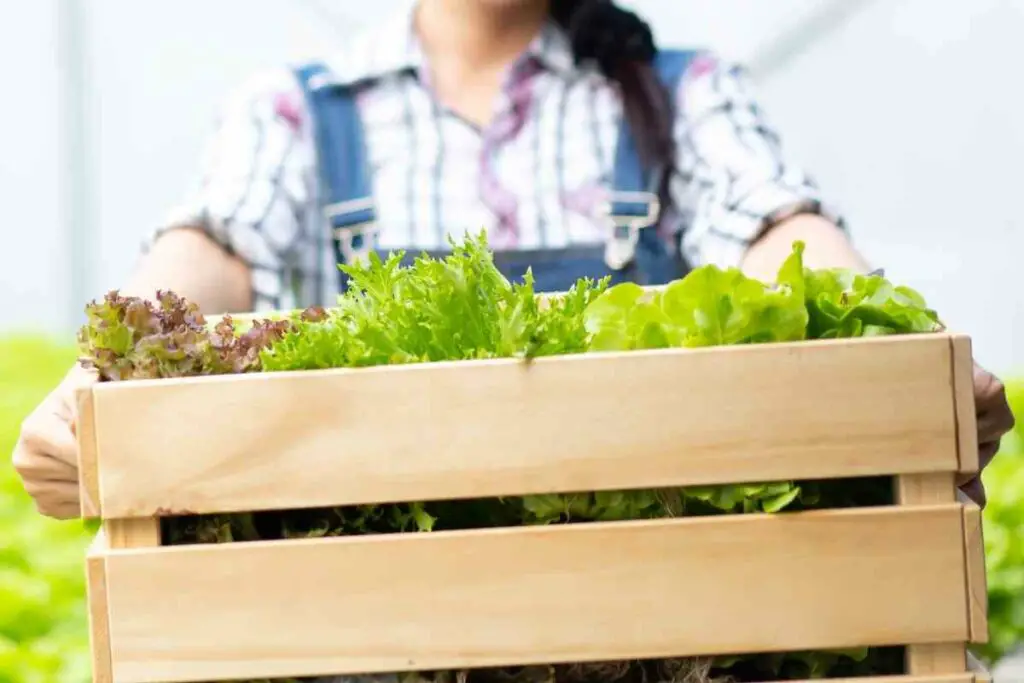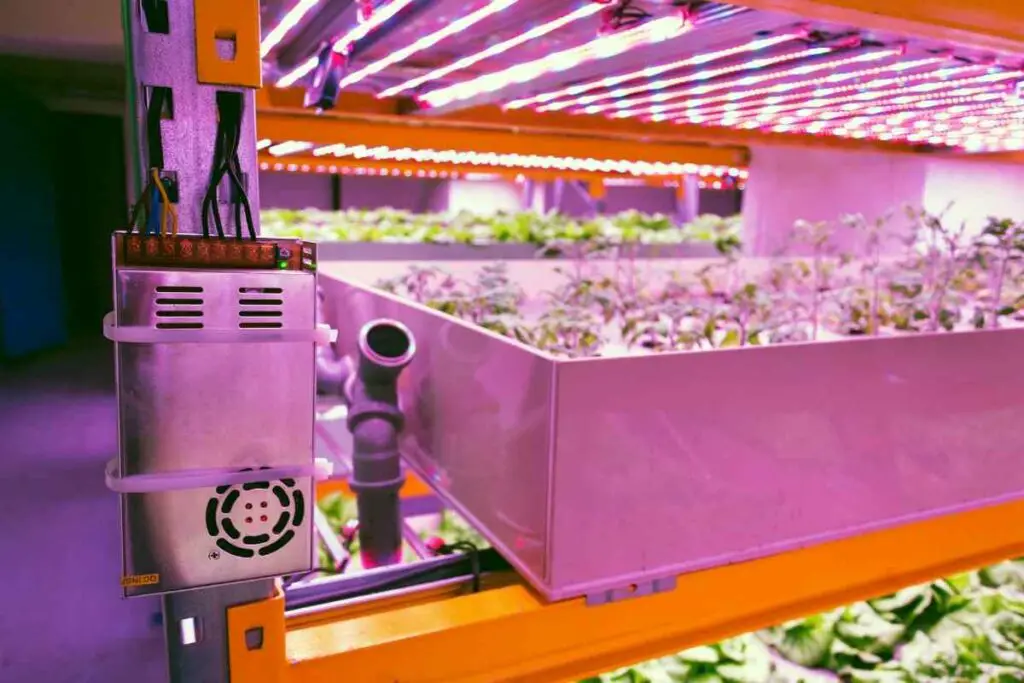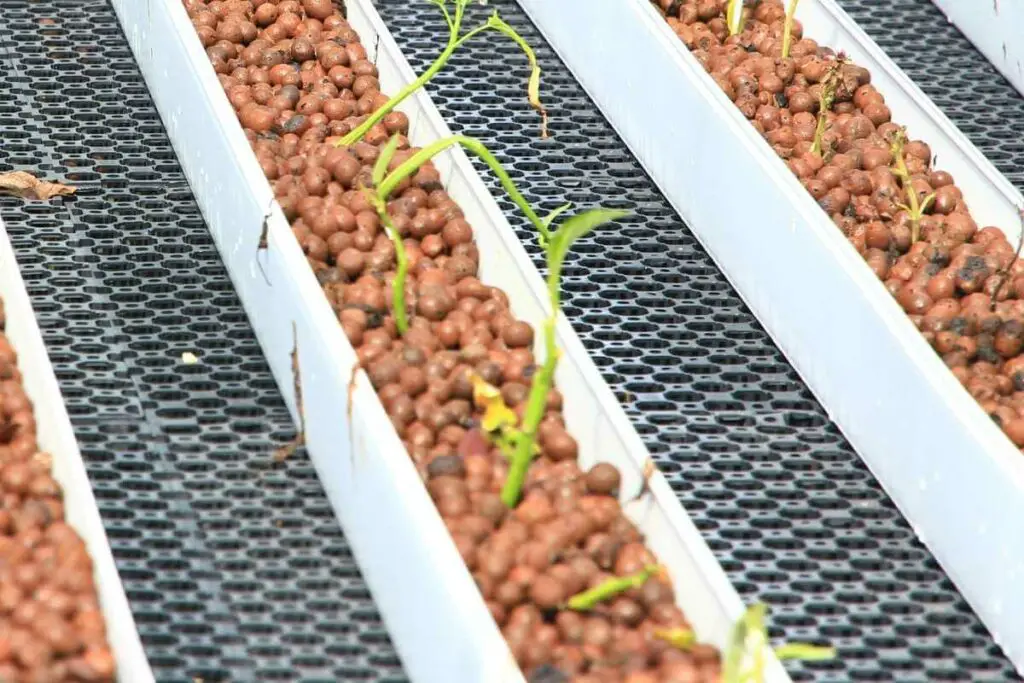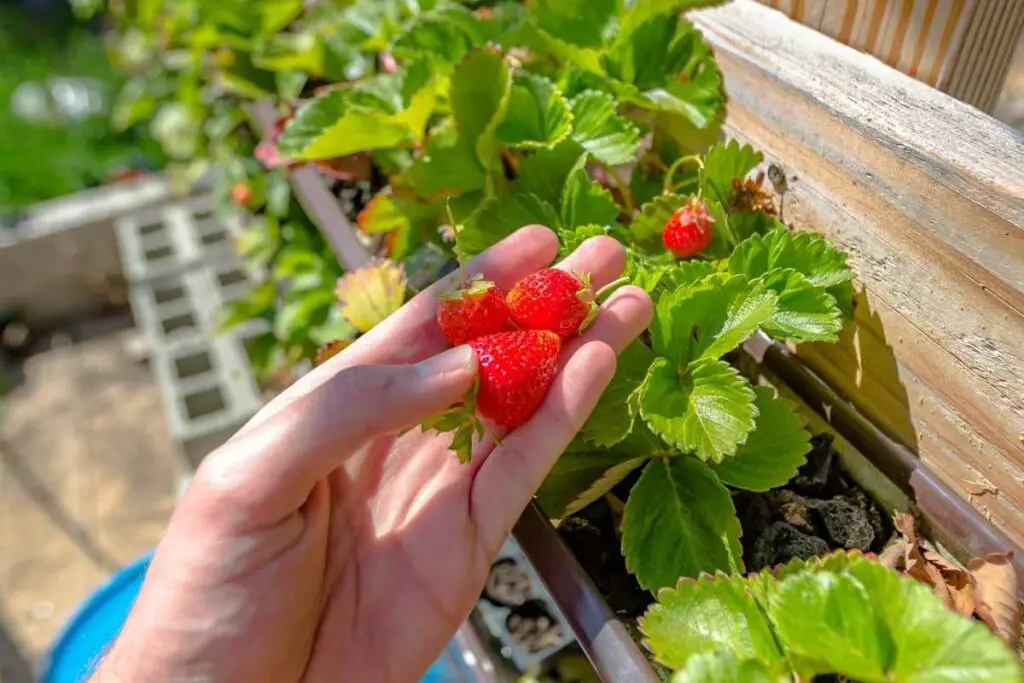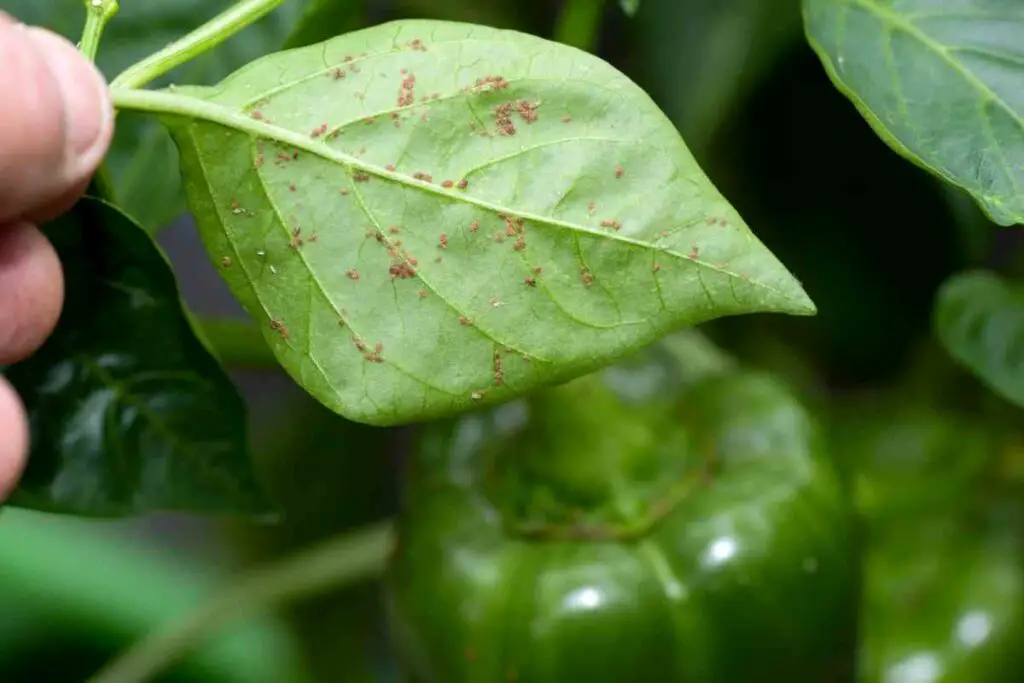If you are interested in learning about aquaponics and how you can start building your own system, this aquaponic water guide is for you.
We are going to look at all the steps for preparing and maintaining an aquaponics system, no matter where you are.
Whatever you need, we’ll cover it in this guide!
Aquaponics is a system that uses fish and their waste to grow plants. The fish poop provides fertilizer, which bacteria turn into nitrites and then nitrates, which in turn feeds the plants. Aquaponics systems are relatively easy to set up and maintain, and they are a great option for people who want to grow their own food in controlled conditions, or even in a backyard.
This aquaponic water guide is going to explore how aquaponic systems can be set up, and how you can maintain them once they are operating.
Setting Up an Aquaponic System
You are probably already well aware of the benefits that are offered by aquaponic systems, so where do you start?
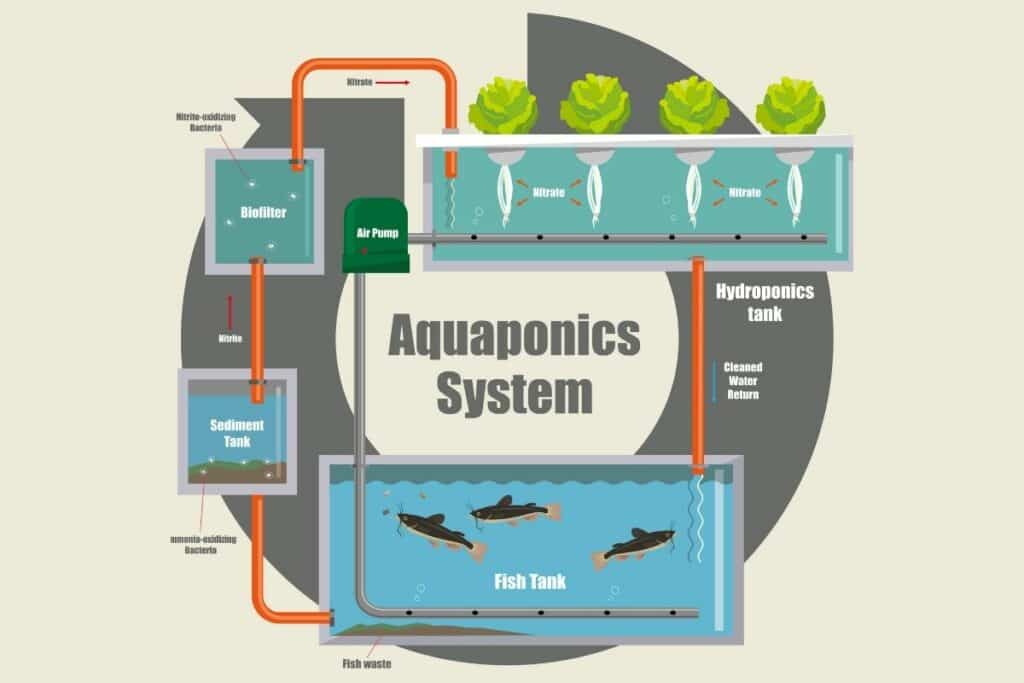
We are going to run through the process step by step to ensure that you have everything you need to get your system going.
Step 1: Decide On a Setup
There are quite a few different kinds of aquaponic systems that you can choose from, and your first step will have to be choosing which one will suit you best.
They are as follows.
Media Bed
Plants are grown in a media like clay pebbles, and this sits on top of a fish tank (or sometimes next to it).
A pump pulls water from the tank and pushes it into the media bed, which allows the plants to pull nutrients in and use them to grow.
The water then flows back into the tank with the fish, replenishing the supply.
As the fish continue to eat and produce waste, the water is again cycled up to the plants, providing them with nutrients.
Works Best: This system is the commonest and usually the easiest for beginners and home growers, so this is what we will look at in this article.
Deep Water Culture
Sometimes also called raft-based growing, this involves getting a foam raft that floats upon the surface of the water.
This allows the roots of the plants to dangle down into the water and they can then draw up the nutrients directly from it.
It is usually drawn up into a channel first, and the roots sit in this channel.
This method is usually used for commercial growing.
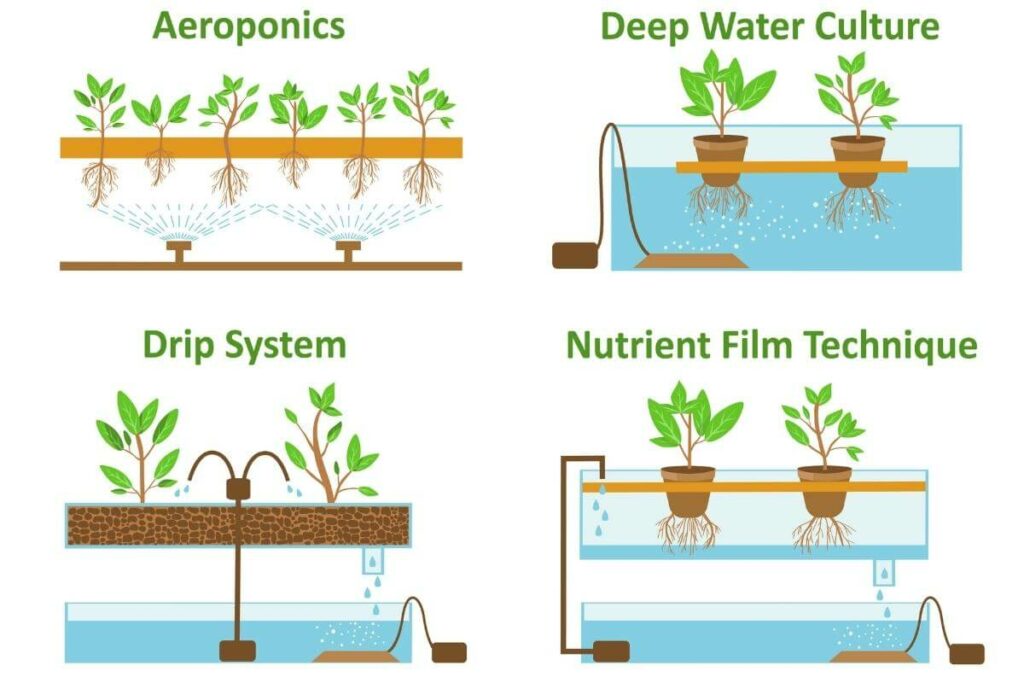
Nutrient Film
For this, water from the fish tank is drawn through a cylinder, which has holes in the top.
The roots of the plants dangle through these holes, and can draw water from them.
This can be done either horizontally or vertically, and it is often run close to ceilings or in other tight spaces.
It is good for plants that don’t need support to grow, so it’s often popular for salads and other leafy greens.
All of these methods are viable in different situations, but the Media Bed is often the easiest, so we will focus on it for today.
Step 2: Choose a Tank
You will need a tank to keep your fish in, and this is one of the first things you will need to get.
You can use or repurpose anything that you want to for this, but you must have something watertight to keep your fish in.
Tanks with rounded corners tend to be the easiest to clean and maintain, and you want to make sure you have one large enough to keep your fish happy and healthy in.
Plan Ahead: If you are planning to expand later, it’s better to go for a tank that is too big than too small.
Step 3: Sort Out a Pump System and Biofilter
An aquaponics system depends upon the water flowing steadily through it, and that means you need a good pump system.
If the water doesn’t keep moving, algae will start to grow, and the plants may not be able to get enough nutrients.
The biofilter helps to process the fish waste, ensuring there are enough bacteria to turn it into plant food.
Without it, your system will get overwhelmed by ammonia.
It is also crucial to make sure that the water has enough oxygen in it, so you will need air pumps:
- Fish need thoroughly oxygenated water, and that involves air bubblers and good water movement.
- If you can provide this, the plants, the bacteria (which are needed for the health of the whole system), and the animals will be happy.
When looking at pumps, you need to bear in mind that electricity is one of the most expensive parts of a hydroponics system, and it is an ongoing cost that is never going to go down.
That means you need to choose with care to make sure that you have a pump and a power source that work for you.
Take some time to compare the different options, work out what level of power you need, and pick a pump that is powerful enough but does not cost a fortune to run.
Step 4: Set Up Your Plant Area
You will need to make a space for the plants next.
This does not need to be fancy; you just need a container for the plants to grow in, with clay beads or some other growing media that will keep the plants upright and allow them to absorb nutrients from the water.
It is important not to use a growing media that is too dense, or the plants cannot grow.
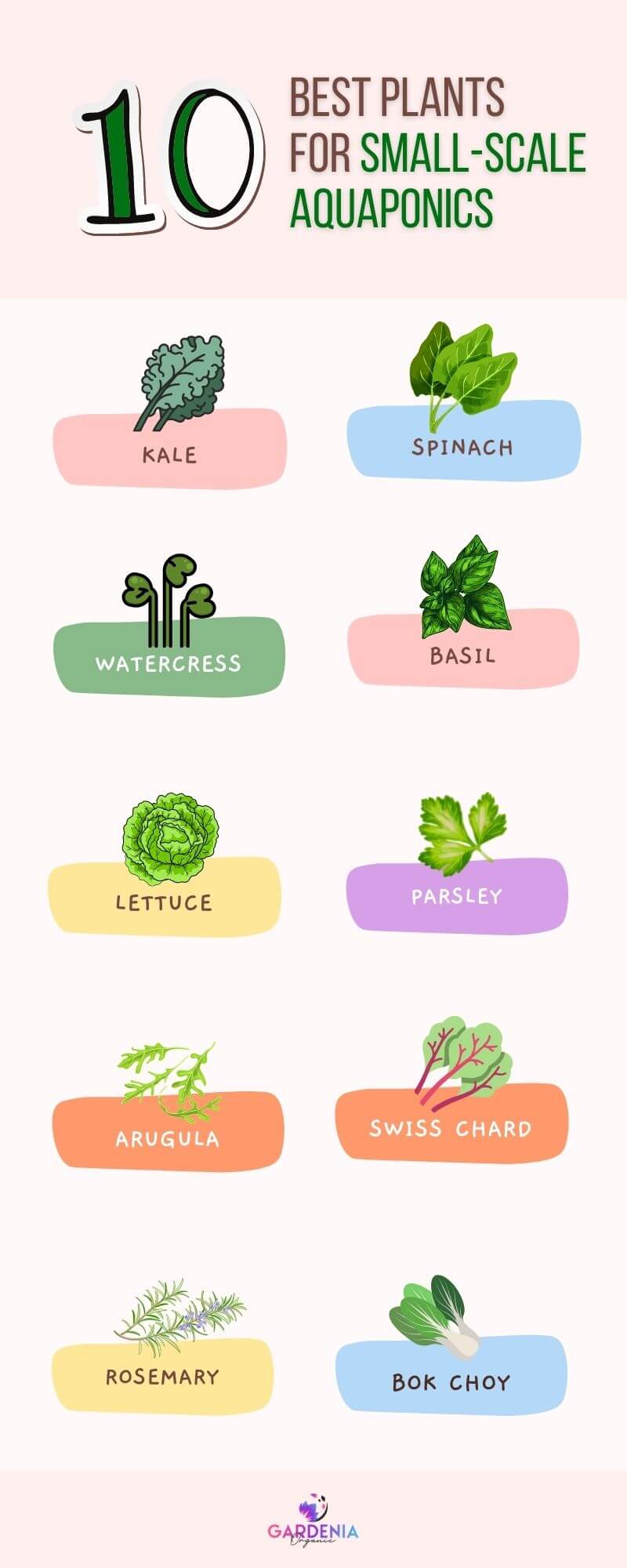
Step 5: Get the Water Prepared
The water, unsurprisingly, is one of the most important parts of your hydroponics system.
If your water quality is poor, the fish will die and the plants will die too.
There are quite a few things that you need to pay attention to in terms of the water quality, which we will cover briefly now:
- Temperature
- Oxygen
- Nitrogen
- pH value
- Alkalinity
You will need some test kits, and once you have set the system up, you can use these to ensure you are meeting the system’s needs.
The above five factors will vary depending on what you are growing in the system, as each plant has a different requirement.
This is often one of the trickiest parts of getting aquaponics right, but once you have spent a bit of time working on it, you should find that everything runs smoothly with only occasional adjustments from you.
You should develop a schedule for checking that the water is still in balance, depending on how sensitive your plants are and how stable your system is.
This will let you know quickly – before plants or fish have a chance to get sick – whether anything needs to be changed and how you should change it if so.
In general, you will need your water:
- temperature to be between 68 and 86 degrees F
- oxygen of 5 mg per liter
- pH value between 6 and 7
Nitrogen and alkalinity may vary. Of course, different kinds of fish and plants do need different levels of care, so research the specific setup that you wish to create.
For example, tropical fish generally prefer temperatures between 71 and 89 degrees F, but many plants will find this too hot, so you will have to choose both your fish and your plants accordingly.
Before Taking Action: Make sure your system is set up before you start buying either kind of stock, however.
Step 6: Insulate the Pipes
If you live somewhere that you will need to be adding heat to your aquaponic system, you need to think about all the ways that you can maximize its efficiency and minimize its costs.
One of the best things to do is to insulate the pipes.
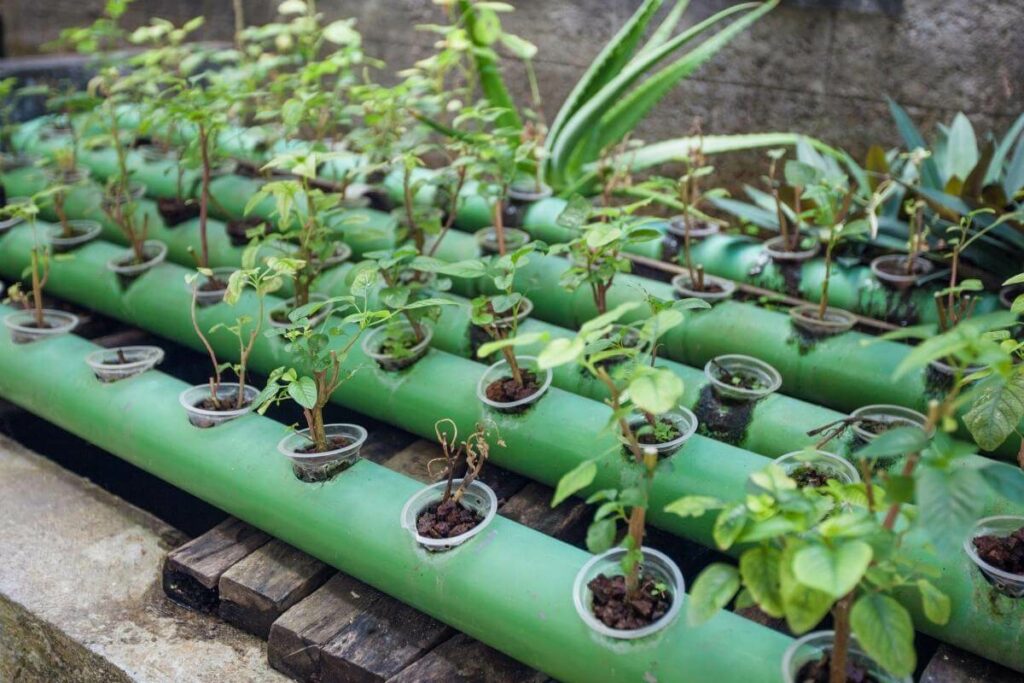
This will help to minimize the heat loss and make sure that the water stays reasonably warm.
The more you can insulate, the better.
Make sure that any exposed pipework running to and from pumps is particularly insulated, because this is where heat loss will be most noticeable.
Step 7: Choose Your Stock
Once your system is set up, you will need to choose what you are going to put into it.
It is important to spend time thinking about the kinds of fish and the kinds of plants so that you know the two will be compatible.
You cannot grow acid loving plants or heat loving plants in a system with alkaline loving fish or cold loving fish.
You must take the time to research both kinds of organisms that you wish to grow in your aquaponics system, or you will not succeed, and one or both of the organisms will die.
When you are just starting out, it is best to choose:
- just one kind of fish
- and one or two kinds of plants
This ensures you aren’t dealing with anything too complicated for your first attempt, and makes it easier to stay on top of everything that you need to be paying attention to.
Step 8: Choose Your Numbers
You need to think about numbers when creating your aquaponic system.
If you don’t, you will end up either wasting space or overcrowding the tanks. Of the two, overcrowding is far worse, because the system is not overloaded and at breaking point all the time.
This allows you a little wiggle room for fluctuations in the system, and will make it easier to keep everything ticking over.
If your system is always stretched, small deficiencies will have an immediate and potentially devastating impact upon everything else.
You must provide much more active management if you stock your system to capacity, and you will need to be constantly watching and monitoring and correcting.
Admittedly, you will grow more food with this method, but it involves considerably more work, and the impact of something going wrong could be far more devastating.
Think carefully about numbers, and always opt for low numbers while you are getting a feel for things.
This makes it much easier to cope and dramatically increases your chances of success.
Maintaining an Aquaponic System
Next in this aquaponic water guide, we are going to look at how you maintain the system you have set up and ensure that it keeps ticking over so you enjoy success.

Step 1: Planting the Container
Firstly, whenever you need to restock your container of plants, make sure that you are spacing the plants out well.
You should put short term crops among long term ones so that you can keep replanting the short term ones, and the long ones will provide shade and shelter.
Leafy greens are a good short term crop to plant, because they benefit from this shade, and they do well in aquaponic systems.
You can plant options such as cucumbers, tomatoes, and eggplants to serve as the long term crops, and these should also grow very well in an aquaponic setup.
Step 2: Manage Food Levels
One of the ongoing jobs of aquaponics is feeding the fish, and it’s important to pay attention to this as you get the system established:
- Your fish need to be fed every day, but you should not just throw in the amount suggested on the packet and walk away.
- You need to watch how your fish respond. If they are hungry and eat every scrap in minutes, you may wish to slightly increase the quantities.
- If your fish do not eat any bits of food within thirty minutes of feeding, you should remove this uneaten food from the system. Adjust the following day’s portion accordingly, and make sure your fish are not getting more than they can eat.
Uneaten food will rot in the water, and this can be harmful to your whole system, which is not designed to deal with the sorts of bacteria that this will introduce.
Essential: Keep your tank clean and get rid of food the fish aren’t eating.
Step 3: Balance Your Plants and Animals
You need to make sure you have a constant and steady harvest of both fish and plants, and these should be kept in harmony with each other.
Think about where you will replenish your stocks from whenever you need to, and have a backup plan in case this supply fails.
Conclusion
Although aquaponics can be a complicated field to get into, it is usually straightforward once you get the hang of it.
Don’t worry about getting everything right first try; you will make progress and learn from your mistakes.

